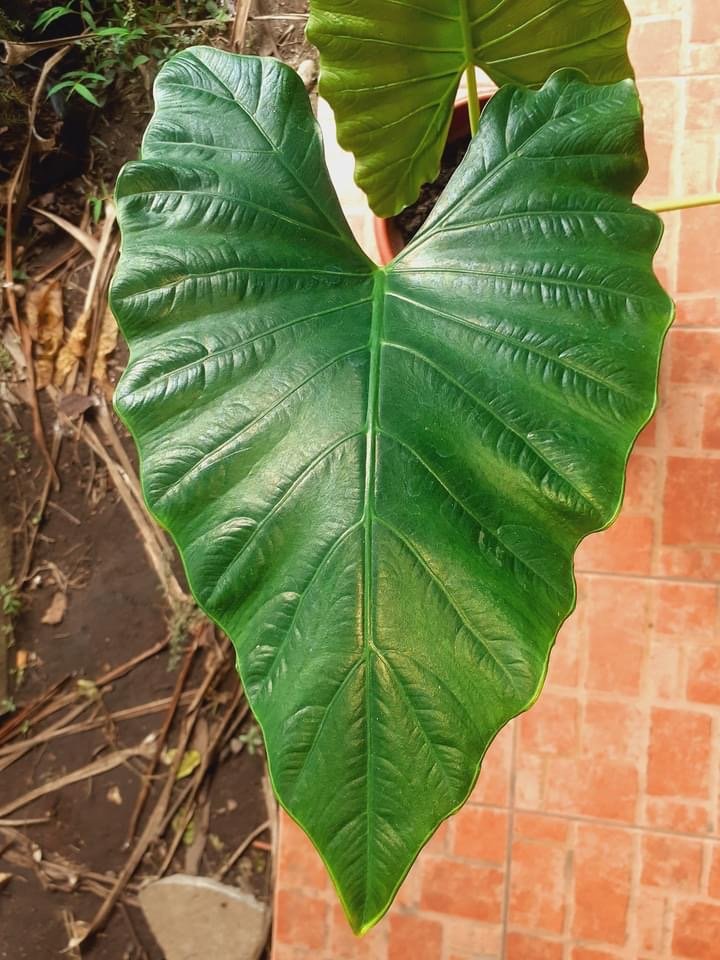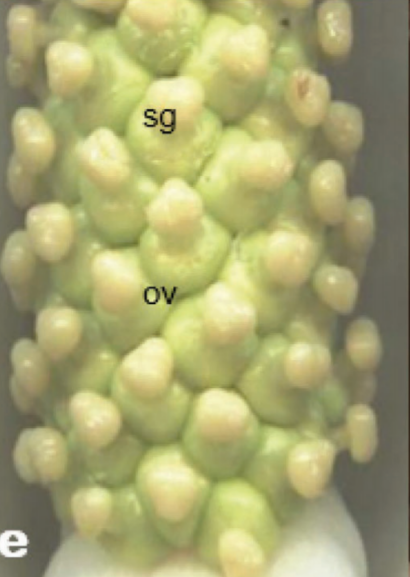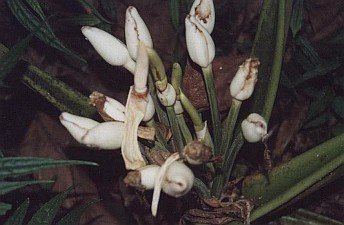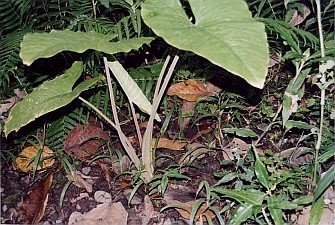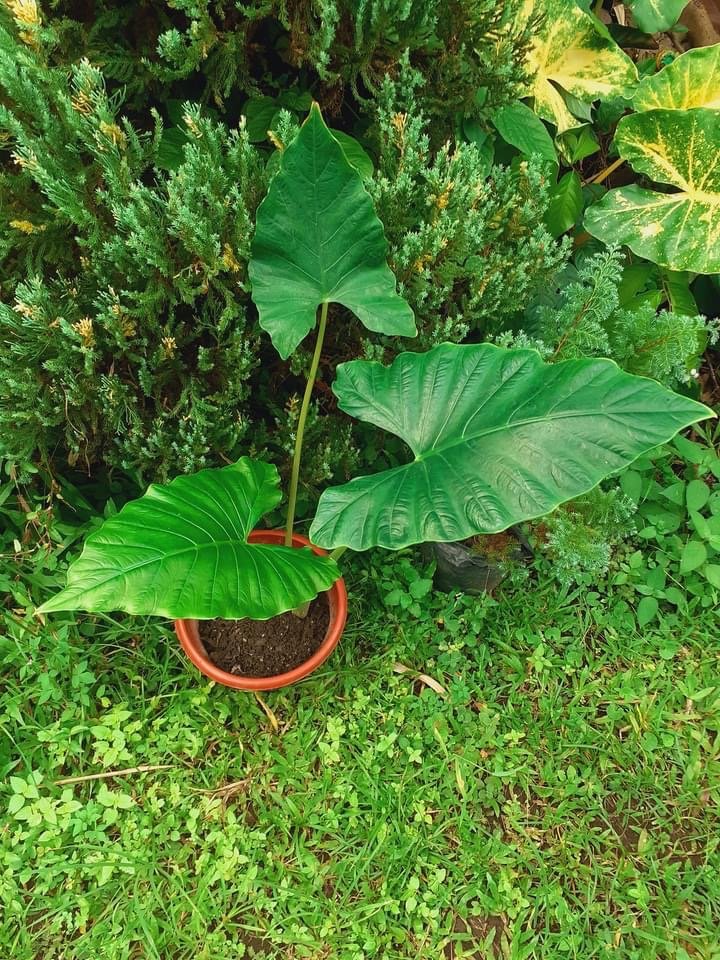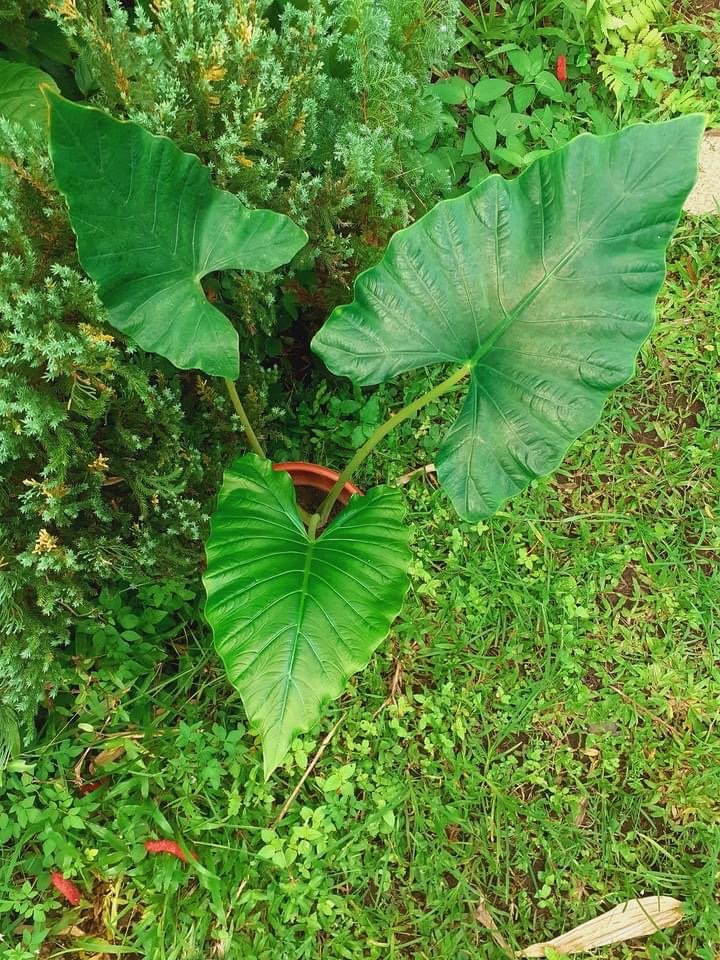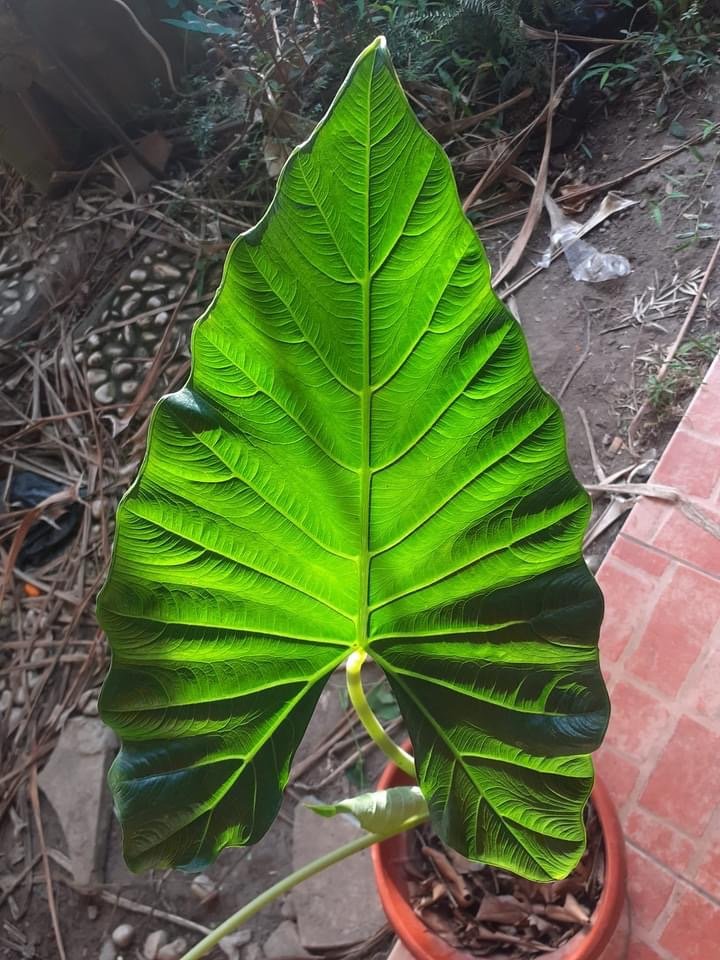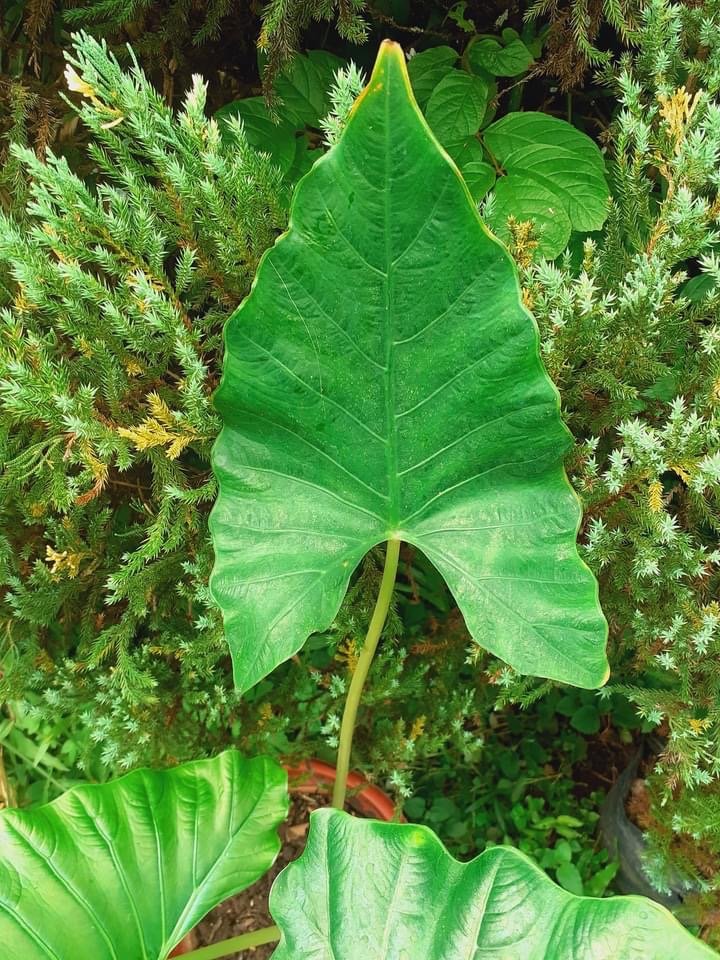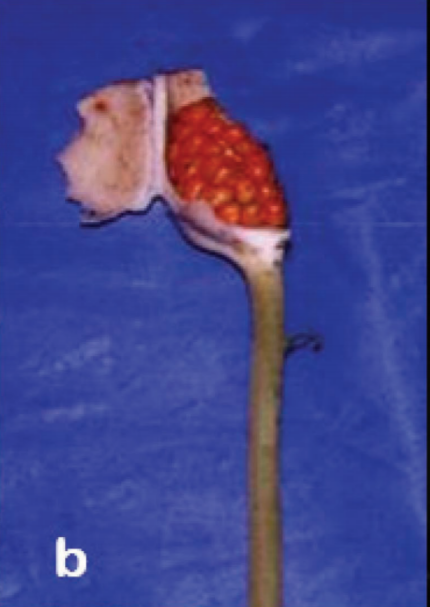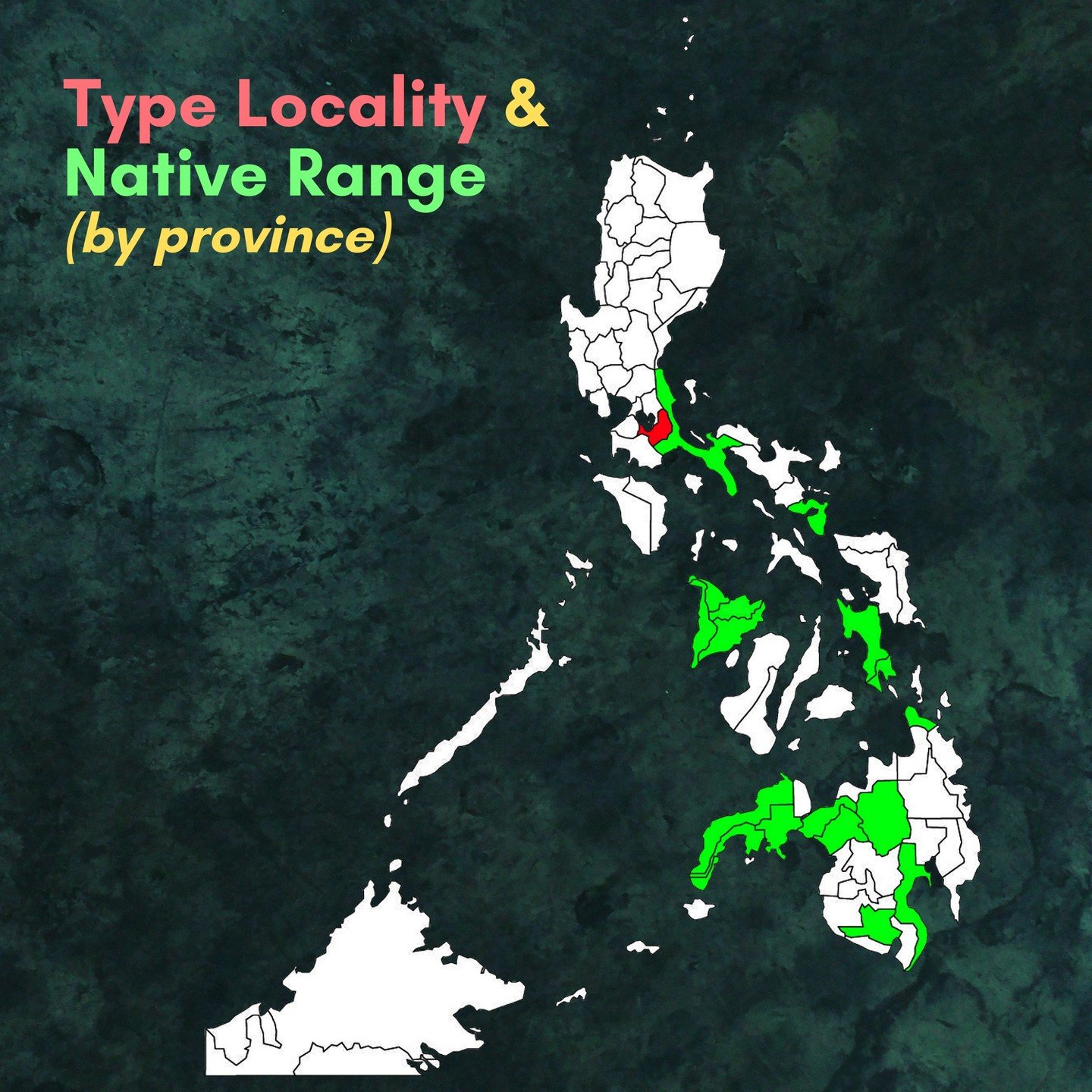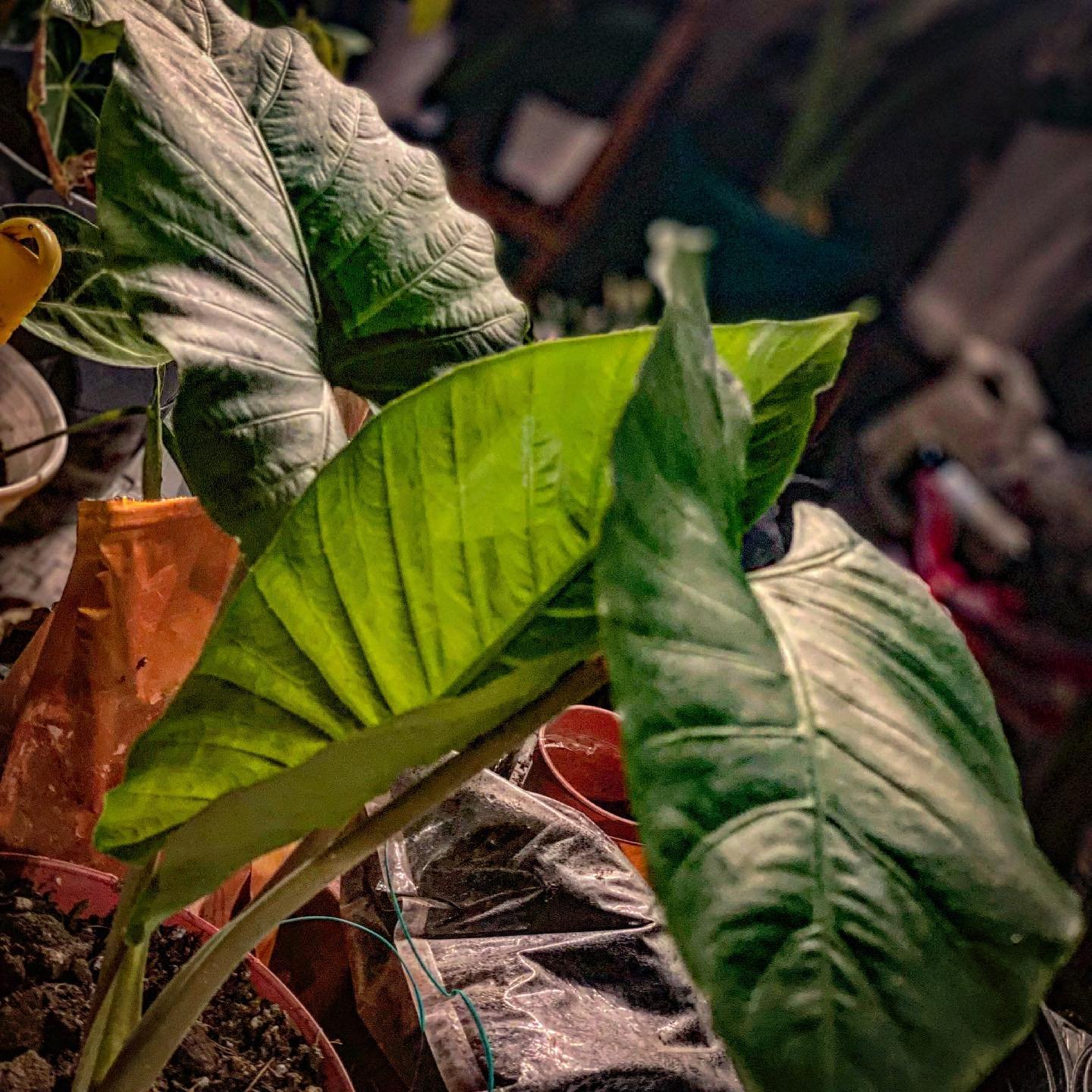ALOCASIA MAQUILINGENSIS
SYNONYMS: A. vulcanica
DISTRIBUTION: Philippines; Luzon, Mindanao, Leyte, Panay.
CLIMATE: Tropical humid climate
Humidity is moderate throughout the year, ranging from 60% to 70%
Temperature is varies between the seasons - within the range of 48°F/9°C to 88°F/31°C during the day. Minimum temperatures never dip below 45°F/7°C
Rainy and humid season (October to May) and a dry season between June and October. The average annual rainfall is 1,200 mm
ECOLOGY: On slopes in primary rain forests at low to medium elevations.
SPECIES DESCRIPTION:
Robust caulescent herb; leaves several together, without interspersed cataphylls; petiole to ea. 1 m long, thickly pubescent to glabrescent, sheathing in the lower third to half; blade broadly ovato-sagittate ea. 55-90 cm long; anterior lobe 50-60 cm long, about as wide at base as long, with ea. 8 primary lateral veins on each side of the anterior costa diverging at ea. 60°, especially the proximal ones sometimes bearing subsidiary veins intermediate in thickness between primary and secondary venation; primary and subsidiary veins with conspicuous glands in their axils; secondary venation rather prominent abaxially, numerous and close-spaced, arising from the primary venation at ea. 70° then deflected marginally and organised into distinct interprimary collective veins; primary and secondary veins strongly pubescent to almost glabrous, but at least with some hairs on the finest secondary veins especially near the blade margin; posterior lobes mostly broadly rounded, sometimes squared off, ea. 20-30 cm long; posterior costae naked in the sinus for ea. 2 cm
INFLORESCENCE:
Inflorescences ca. 10-30 clustered together in the centre of the crown; peduncle ea. 15 cm long, pubescent; spathe white, ea. 10 cm long; lower spathe ea. 2 cm long, separated from the blade by a rather weak constriction slightly above the level of the sterile interstice of the spadix; limb narrowly oblong lanceolate, the tip obtuse to subtruncate and abruptly mucronate for ea. 5 mm; spadix equalling to slightly exceeding the spathe in length, stipitate for ea. 6 mm; female zone ea. 1 cm long; ovaries ovoid, ea. 1.5 mm tall; style slender, ea. 0.8 mm long; stigma broad, weakly lobed; sterile interstice very short, not or hardly attenuated, ea. 3 mm long (more or less one whorl of synandrodia); male zone 1. 7-2 cm long, cylindric, ea. 6 mm diam.; synandria mostly rhombic-hexagonal, ca. 1.5-2 mm across, those in the middle of the male zone longitudinally (with respect to spadix) compressed (?always); appendix ca. 6-7 cm long, cylindric, distally tapering to a point, composed of low .sinuous compressed staminodia; fruiting spathe ?red, ovoid to pyriform, 4.5 x 2 cm, longitudinally dehiscent; fruits red
VARIEGATED FORMS: N/A
ETYMOLOGY: This species is named after Mt. Makiling, or Mt. Maquiling, an inactive volcano located in the provinces of Laguna and Batangas, on the island of Luzon, in the Philippines
NOTES: In the protologue of Alocasia maquilingensis, Merrill (loc. cit.) cited Baker 868 as the 'type', as well as citing a number of other collections. Of all the specimens cited, it appears that only Merrill 7153, designated here as neotype, is still extant. I infer that Merrill's designation of one of the cited specimens as the 'type' has the consequence that neotypification, rather than lectotypification, is required under the circumstances.
The pubescent petioles and main veins are unique in Philippine Alocasia, but also found (constantly or variably) in New Guinea Alocasia nicolsonii A. Hay, Sulawesi Alocasia suhirmaniana Yuzami & A. Hay and Alocasia celebica Engl., West Malesian A. puber (Hassk.) Schott and Alocasia inornata Hallier /., Sumateran Alocasia arifolia Hallier /. and Bornean Alocasia sarawakensis M. Hotta (the latter only in juvenile plants), Alocasia reginae N.E. Br. and Alocasia scabriuscula N.E. Br.. Plants from the type locality are much hairier than those from elsewhere. This species can be mistaken for Alocasia macrorrhizos (q.v.), which differs in being totally glabrous, having hardly prominent secondary venation that does not form interprimary collective veins, and much larger inflorescences that do not form central clusters.
Other specimens seen: Luzon, Sorsogon Prov., Mt Bulusan, Elmer 16181 (BO, K, NSW, NY, US). Luzon, Laguna Prov., Mt Makiling, Elmer 17955 (BO, CAL, G, GH, K, L, NSW, P, US); Luzon, Laguna Prov. Los Banos (Mt Makiling), Elmer 18239 (BO); Luzon, Laguna Prov., Mt Makiling, along path from College of Agriculture to summit of Mt Makiling, Nicolson 689 (US); Mindanao, Davao Prov., Upper Baractan (foot of Mt. Apo) Nicolson 728 (US); Leyte, Vicinity of Dagami, nr Barrio Putok, Nicolson 814 (US); Luzon, Laguna Prov., Mt Makiling, along path from College of Agriculture, Nicolson 846 (US); Panay, Capiz Prov., Jamindan, Ramos & Edaho BS 31472 (K, US); Mindanao, Zamboanga Dist., Malangas, Ramos & Edaho BS 36829 (K, US); Mindanao, Lanao Prov., Porog, Zwickey 791 (H).
CULTIVARS: N/A
HYBRIDS: N/A


